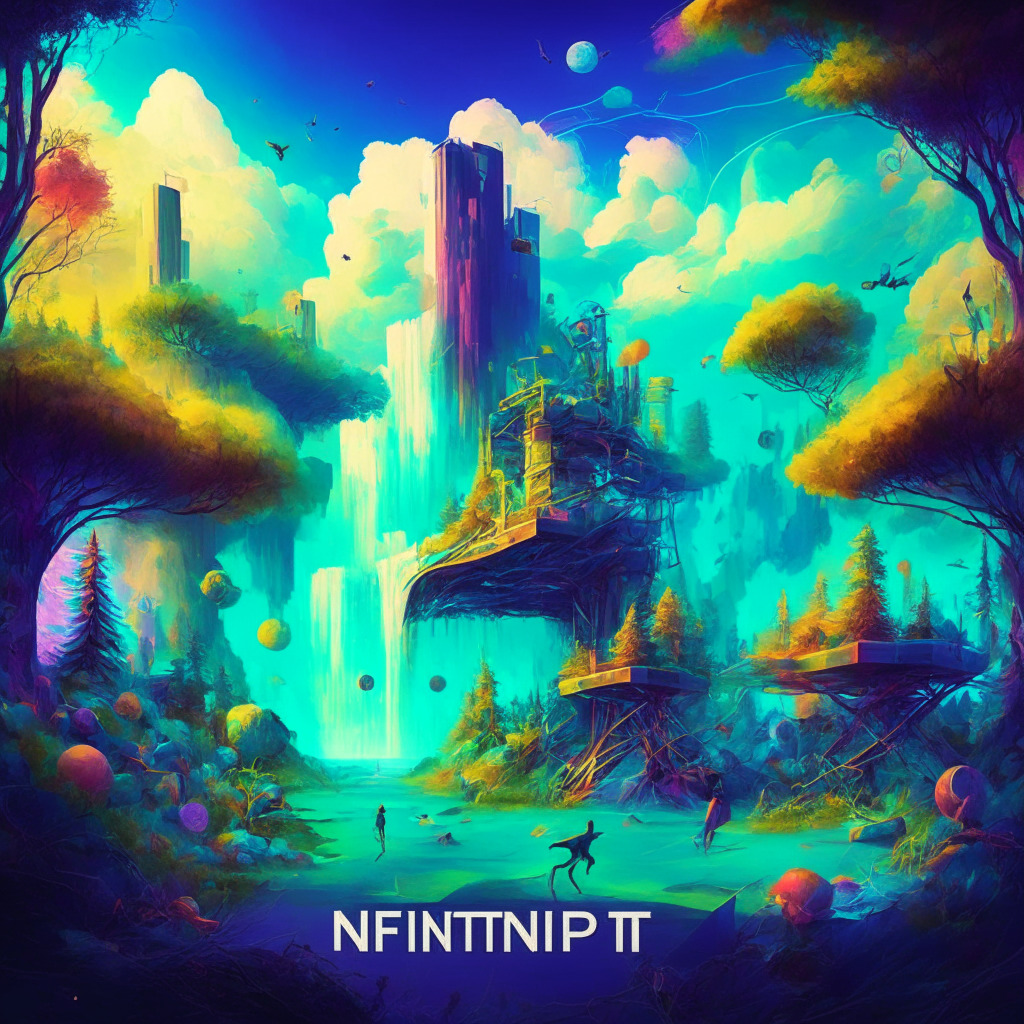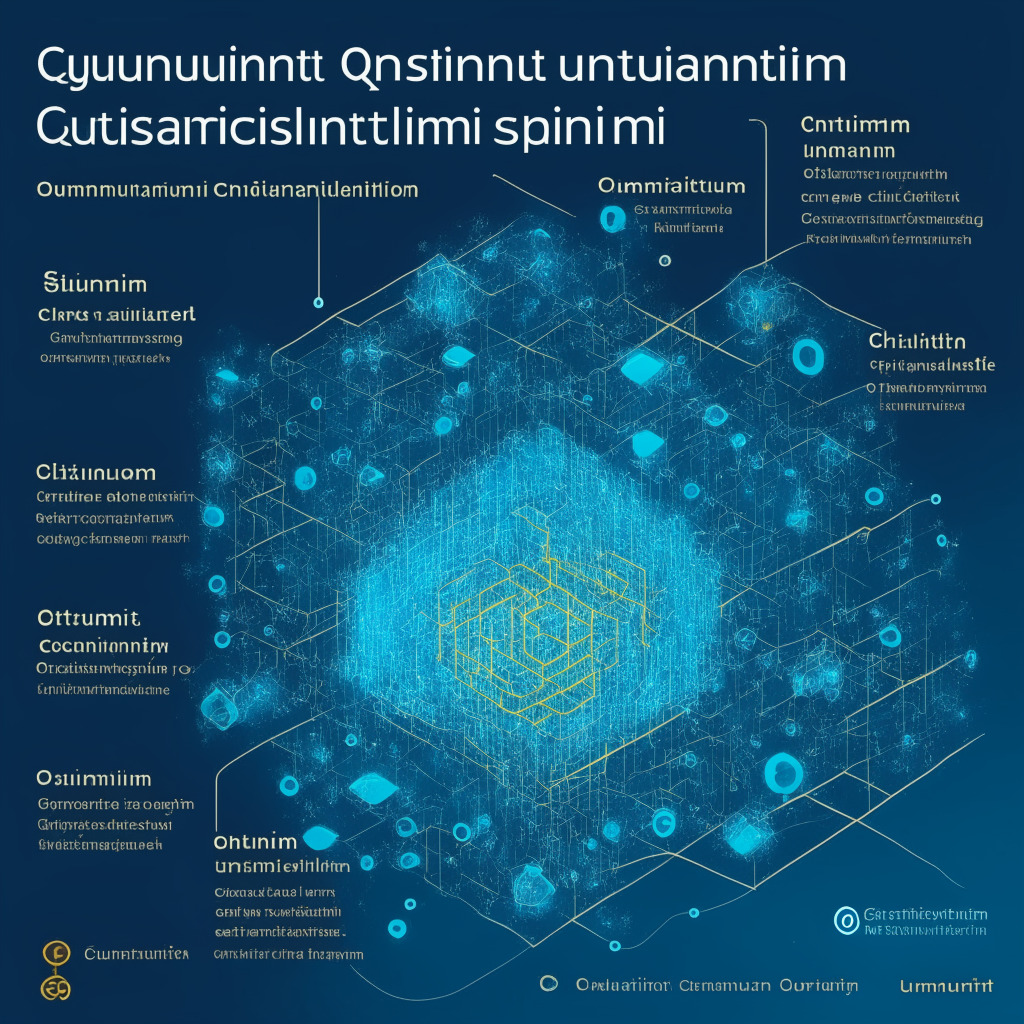The Public Goods Network is an Optimistic layer-2 rollup of Ethereum, designed to redirect most net sequencer fees into public goods projects, rather than to token holders or developers. This model could, however, raise concerns about potential misuse of funds, lack of transparency, and biases, especially given reliance on a yet-to-be-defined new governance model.
Search Results for: Base network
Unveiling the Future of Blockchain: Sega’s Pause, Bitfinex’s Recovery, DAO Halts and Innovations in Bitcoin’s Lightning Network
“Sega withdraws from blockchain gaming to avoid content devaluation. Bitfinex recovers more stolen assets from the 2016 hack. BarnBridge DAO halts all activities due to SEC’s investigation. Lightning Labs introduces tools for AI and Lighting developers. Moreover, AFME calls for DeFi’s inclusion in MiCA regulatory framework.”
Downfall of Celsius Network: A Case Study in Crypto Regulation and its Impact on Innovation
“The Commodity Futures Trading Commission (CFTC) investigators have found that Celsius Network and its ex-CEO violated U.S. regulations, possibly leading to deceit and fraud. The increased regulatory scrutiny could offer more security and transparency in the digital asset market or deter innovation.”
Unveiling Base: Coinbase’s Disruptive Layer 2 Blockchain Safeguards and Its Mainnet Launch Challenges
“Base, Coinbase’s layer 2 blockchain, successfully passed a series of security audits ahead of its mainnet launch. Created with Optimism, Base aims to attract one million new crypto users. Over 100 experts examined its code, finding no significant vulnerabilities, reflecting Coinbase’s dedication to security.”
Bracing for Base: Anxious Anticipation and Skepticism Surrounding Coinbase’s Layer-2 Launch
“Coinbase’s layer-2 network, Base, is close to its mainnet launch after passing internal and external security audits. The platform promises a developer-friendly, secure, and low-cost approach to enhance the blockchain ecosystem. Still, questions remain about scalability, security vulnerabilities, and the responsiveness of layer-2 solutions.”
Navigating the New Digital Frontier: Versal Network & the Future of Cross-Border Crypto Transactions
“Six Clovers, a crypto payment systems developer, recently launched the Versal Network on the Sui blockchain to enable cross-border transactions for businesses. This innovative network aims to merge traditional e-commerce with the emerging Web3 commerce and paves the way for businesses to transact via stablecoins and Central Bank Digital Currencies.”
Coinbase’s Slipping ETH Staking Market Share: Regulatory Pressure and Revenue Implications
Coinbase’s ether staking market share has dropped to 9.7% amid increasing regulatory concerns, experiencing a net outflow of $517 million. Competitors like Figment, RocketPool, and Kiln are closing the gap, highlighting challenges faced by crypto platforms subject to regulatory scrutiny.
Zora Network Revolutionizes NFT Landscape: Pros, Cons, and Main Conflicts
The Zora Network, focused on revolutionizing the NFT landscape, introduces its layer 2 blockchain network for faster, cheaper, and environmentally friendly minting processes. Built on Optimism’s tech stack and secured by Ethereum, Zora’s platform already endorses over 35 groups, attracts over 100,000 monthly users, and has raised $60 million in investments.
Binance Integrates Bitcoin Lightning Network: Boost for Faster Transactions or Limited Adoption?
Binance plans to integrate the Bitcoin Lightning Network for faster, cheaper transactions, addressing scalability issues. Despite its potential, the Lightning Network’s liquidity is less than 0.5% of Ether locked in DeFi contracts, raising questions about mainstream adoption and its impact on cryptocurrencies and cross-border payments.
Exploring the Impact of Self-Custody Wallets on Bitcoin Market and Network Utility
The increasing trend of Bitcoin being sent to self-custody wallets is impacting the cryptocurrency market significantly, leading to decreased circulation and reduced market capitalization. However, current exchange activity may offset the negative effects as long as it remains healthy.
Crypto Market Shakes as SEC Lawsuit Targets Binance, Coinbase: Ethereum Faces Key Support Test
The cryptocurrency market experienced a large-scale liquidation event following the US SEC lawsuit against Binance and Coinbase. Ethereum lost its crucial monthly support of $1775-$1765, suggesting an extended correction phase. Market signals indicate that if the $1765 support level breaks, Ethereum’s price could tumble further.
AI-Based Coins Hit Hard by Regulatory Crackdown: Analyzing the Impact on Top Tokens
AI-based coins face a downturn amid ongoing regulatory turmoil in the crypto market. Top AI token, The Graph, experiences a 17% drop, while Render Token trades down 7%. Altcoins see severe impact, highlighting the need for comprehensive market research before investing in cryptocurrencies.
SEC Lawsuits Trigger $4 Billion Exodus from Binance and Coinbase: Analyzing Impacts and Responses
The SEC has filed lawsuits against Binance, Binance.US, and Coinbase, triggering an exodus of around $4 billion in deposits. Blockchain analytics firms Nansen and Glassnode recorded combined net outflows of $3.1 billion via Ethereum and $864 million in bitcoin. The regulatory clampdown led to mass withdrawals from the exchanges, unsettling the cryptocurrency market and causing substantial declines in tokens categorized as securities within the lawsuits.
Ethereum’s Optimism Network Upgrade: Creating a Superchain with Bedrock
The Optimism network recently implemented a significant upgrade called “Bedrock,” transforming Ethereum’s native token, ETH, into a native token alongside Optimism’s own OP token. This upgrade aims to create a “Superchain” of interoperable and composable blockchains, enhancing the capabilities of both layer 1 and layer 2 networks.
Coinbase and SEC Clash: Analyzing Regulatory Frameworks and the Future of Crypto Oversight
Coinbase Chief Legal Officer Paul Grewal urged Congress to adopt a draft bill outlining a regulatory framework for cryptocurrency transactions, following a lawsuit by the SEC against the company. Grewal criticized the SEC’s enforcement-only approach, instead advocating for transparent legislation applied equally to all. The proposed bill aims to classify digital assets and determine regulatory authority.
Lightning Network: A True Scaling Solution or Overhyped Innovation? Pros, Cons, and Conflicts
The Lightning Network, a Bitcoin layer 2 protocol, aims to address Bitcoin’s scaling issues, such as high transaction fees and slow blocks. While promising, it remains experimental, and a more pragmatic view suggests that it may not solve all types of transactions. Diversified thought and constant innovation keep the cryptocurrency space robust and resilient.
Bitcoin Memecoins Debate: Network Congestion vs. Blockchain Flexibility and Growth
The recent surge in Bitcoin-based memecoins has caused network congestion and higher gas prices, leading some developers to contemplate removing these coins from the network. However, critics argue that memecoins have played a significant role in the growth of the Bitcoin blockchain, and their removal could hinder its flexibility as a digital asset platform. Open dialogue is needed to weigh the benefits and drawbacks while ensuring long-term sustainability.
Ark Protocol: Revolutionizing Inbound Liquidity and Complementing Bitcoin’s Lightning Network
Burak Keceli, a self-taught Bitcoin developer, has proposed a new layer 2 protocol called Ark that aims to solve Lightning Network’s “inbound liquidity” problem. Ark utilizes service providers to offer continuous liquidity services for a fee, potentially complementing, rather than competing with, the Lightning Network.
Boson Sampling-Based PoW: Revolutionizing Crypto with Quantum Efficiency and Eco-Friendly Solutions
A research collaboration between BTQ and university scholars has proposed a quantum computing-based proof-of-work (PoW) system called “proof-of-work consensus by quantum sampling.” This breakthrough approach, based on boson sampling, aims to provide faster, more energy-efficient processing and potentially future-proof blockchain networks. However, concerns of centralization and accessibility must be addressed for widespread adoption.
Sui Network and Red Bull Racing Team: The Future of Blockchain in Motorsports
Sui Network backed by Mysten Labs, recently announced a partnership with Red Bull Formula One Racing Team as their official blockchain partner. This collaboration aims to demonstrate web3’s potential in connecting audiences and enhancing fan experiences, while navigating the ever-changing landscape of crypto-related partnerships within the sports industry.
Sui Network and Oracle Red Bull Racing: Unleashing Blockchain’s Potential in Sports
Layer-1 blockchain protocol Sui Network announces partnership with Oracle Red Bull Racing to create immersive digital experiences for fans. The collaboration aims to exhibit the potential of blockchain technology in developing productive human interactions within the sports industry.
Introducing Fireside Forum: Pi Network’s Decentralized Social Platform Revolutionizing Content Value
The Pi Network has launched Fireside Forum, a decentralized social platform that uses Pi token cryptocurrency to enhance content quality and user accountability. By requiring users to pay in native cryptocurrency, the platform aims to regulate online behavior and encourage meaningful interactions, thus addressing issues like misinformation and trolling faced by traditional social networks.
Binance CEO on Lightning Network, Mining, and Global Crypto Regulations
Binance CEO Changpeng “CZ” Zhao discusses the importance of Lightning Network integration for crypto exchanges, mining operations, regulatory challenges, and the need for investors to research before investing in meme coins, NFTs, or metaverse projects. Favorable crypto regulations cited in UAE and Hong Kong.
XDC Network and SBI VC Trade: Bridging Blockchain and Japanese Trade Finance Market
The XDC Network is partnering with SBI VC Trade to expand its presence in the Japanese market and enhance the trading experience. This collaboration aims to streamline the trade finance sector by improving transparency, traceability, and cost reduction while fostering blockchain adoption in the international trade and finance industries.
Fantom’s Gas Monetization Program: Boosting Network Demand or Hindering Innovation?
Fantom blockchain introduced the “dApp Gas Monetization Program” to address its burn rate issue, reducing it from 20% to 5%, and redirect 15% of gas fees towards applications built on the platform. The program aims to retain developers and support Fantom’s network infrastructure while rewarding in-demand applications, despite potential drawbacks like increased gas fee dependency.
Cardano’s Exciting Developments: Network Fixes, dApps, and Market Impact Explained
Cardano tackles key projects including network issues, decentralized exchange swaps, and dApps, leading to a 1% increase in ADA value. With improvements in nodes, networking, and ledger, the network’s performance sees a considerable boost, positively impacting the overall price of ADA.
Bitpanda and Coinbase Partnership: Exploring Opportunities and Regulatory Challenges
Bitpanda partners with Coinbase to secure a licensing agreement making Coinbase a liquidity provider for Bitpanda Technology Solutions. The collaboration offers a scalable Investing-as-a-Service infrastructure for institutional clients like banks and financial institutions outside the U.S, while facing potential increased regulatory scrutiny.
Bitcoin NFTs and Meme Tokens: Boon for Adoption or Network Congestion Nightmare?
Bitcoin-based NFTs and meme tokens experience soaring popularity as Ordinals inscriptions reach 9 million. The Bitcoin Ordinals protocol enables inscribing digital artifacts, drawing criticism for misuse and increasing network congestion. Despite concerns, it serves as a catalyst for Bitcoin adoption and expansion into other cryptocurrencies.
Crypto Consortium Fahrenheit Acquires Celsius Network: Implications and Legal Battles in the Crypto World
The crypto consortium Fahrenheit acquires the insolvent lender Celsius Network, gaining ownership of its institutional loan portfolio, staked crypto assets, Bitcoin mining unit, and other crypto-related investments. Estimated liquid cryptocurrency received: $450-$500 million. Additionally, Bitpanda collaborates with Coinbase to offer digital assets to European clients, and Bitfinex invests in Chilean crypto firm Orionx, promoting financial freedom in Latin America.
Binance Bridges Centralized and Decentralized Worlds with Polkadot-Based Tether
Binance now supports deposits and withdrawals for Polkadot-based Tether (USDT), improving convenience and liquidity within the ecosystem, and enhancing interoperability between centralized and decentralized platforms. This development signifies growing acceptance and credibility of Polkadot’s potential within the wider crypto sphere.
Chinese Ethereum: Conflux Network’s Rise Amid Hong Kong Crypto Trading Decision
Conflux Network (CFX), known as the “Chinese Ethereum,” experienced a token price surge following Hong Kong’s decision to allow retail crypto trading. As the only regulatory-compliant public blockchain in China, Conflux has partnered on blockchain initiatives with major brands and government entities, and aims to help Hong Kong and mainland China expand in the Web3 area.
Manta Network and Linea’s zkSBT: Enhancing Privacy in Crypto & Blockchain Applications
Manta Network partners with Linea to introduce zero-knowledge soulbound tokens (zkSBT) to maintain user privacy on blockchain platforms. The collaboration aims to provide decentralized, trustless, and private identity verification for various applications without compromising on-chain activity data or requiring KYC screenings.































